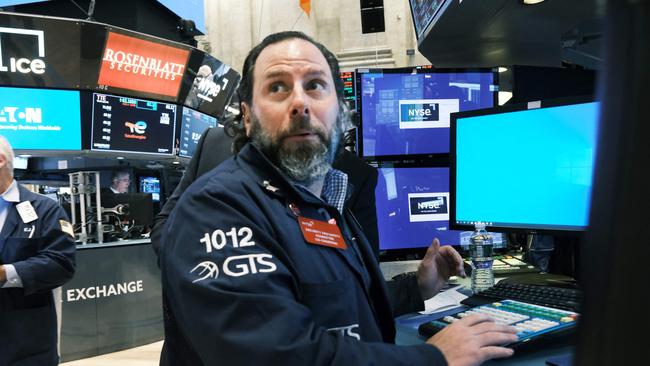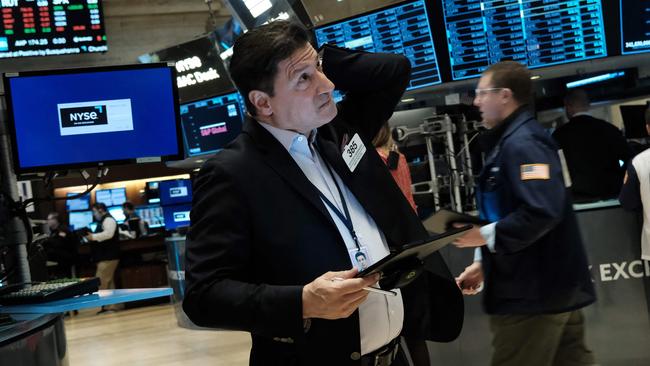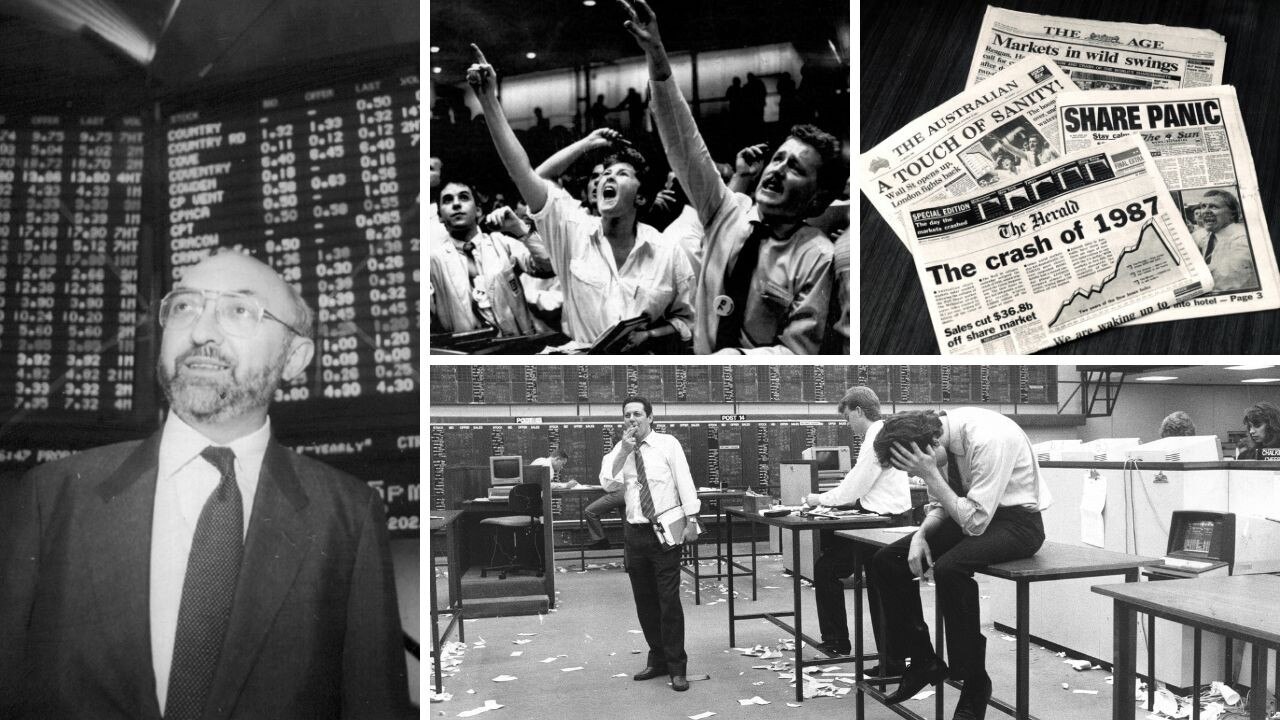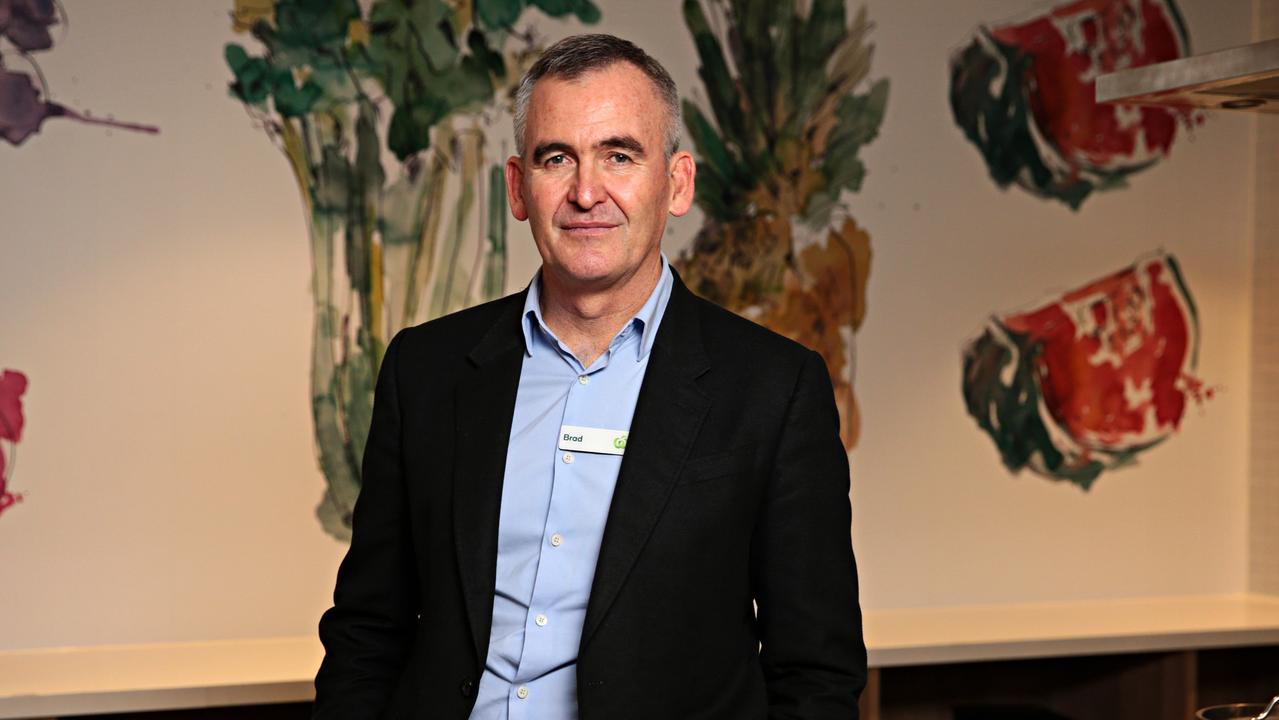First the SVB collapse, now markets wait for US inflation data
A high US inflation number could combine with the SVB disaster to create a week of volatility and uncertainty on global markets.

Terry McCrann
Don't miss out on the headlines from Terry McCrann. Followed categories will be added to My News.
Heading for midnight this Tuesday downunder time – and so, almost literally at the “11th hour” - the latest US inflation numbers will surface.
They were always going to be extraordinarily significant – not just for Americans facing, struggling with, exactly the same surge in the cost of living as Australians, but for investors, on Wall St and again around the world.
Simply, bluntly would signs of still too-high if not necessarily surging inflation confirm Fed head Jerome Powell in his belief that he had to push interest rates higher; thereby probably opting for the 50-point hike he had signalled last week, at the coming Fed meeting in just over a week?
Or would low inflation have allowed him to opt for only a 25-point hike or indeed the first pause by the Fed, since it started hiking a year ago?
Well, that was the big issue last Friday morning, Big Apple-time; the issue that was going to totally consume Wall St – and so, back to our market – all this week.
And then came - or rather, went, belly-up, kaput – SVB, a bank that most people would never have heard of: the all too edgy, all too 21st century, aptly named and operated, Silicon Valley Bank.
It had exploded to become the 18th biggest bank in America, riding a tide of lending to tech, big and mostly small.
Its collapse threatened to be 2023’s GFC Version 2.0 spark like Lehman had been in 2008.
Suddenly – and all through the weekend – the inflation issue receded and was replaced by, well, confusion.
Was it bad news? GFC 2.0?

That’s to say, a cascading series of bank collapses - or, what actually happened back in 2008, banks being bailed out wholesale?
And would the Fed backtrack on rates bigtime, moving to cuts?
Over the weekend we got ‘good news’, at least for global investors.
What the Fed did do – together with the Treasury department and the Bank Depositor Insurance entity – was to bail-out 100 per cent all SVB depositors, plus those of a second, smaller, bank as well.
But not the banks themselves.
So, Wall St futures surged Monday afternoon downunder time.
And we now count down through Wall St trading overnight Monday and then through our trading day Tuesday, to those US inflation numbers. At one extreme a low-number could be a ‘good news two-fer’: a rate pause combined with the SVB collapse being neutralised and no or very little flow through to other US banks and the financial system more broadly.
But at the other extreme a high inflation number could combine with the SVB disaster to create a week of numbing, highly volatile, uncertainty.
Or worse.
‘Ending’ in what would the Fed do?
Now, the SVB collapse has been broadly neutralised, at least for now – both in terms of triggering more bank collapse, and be the major driver of next week’s Fed decision.
That’s to say, the Fed – as of right now – could largely go back to focusing on the inflation data.
A bad number would take it back towards a 50-pointer. But a weak number would now more certainly see 25 points or even a pause.
Yes, the Fed and Co have guaranteed depositors will get all their money back, but there’s still been trauma to the system - especially both in the context of and directly flowing from those rising interest rates.
So, there will be impacts more widely.
So, we now have a week of trading on Wall St in the wakes of both tonight’s inflation number and the continuing SVB saga.
It’s likely to lead to, at best, a lot of volatility.
And you have to conclude that a ‘bad news outcome’ is more probable than a “Goldilocks one’.
Originally published as First the SVB collapse, now markets wait for US inflation data



